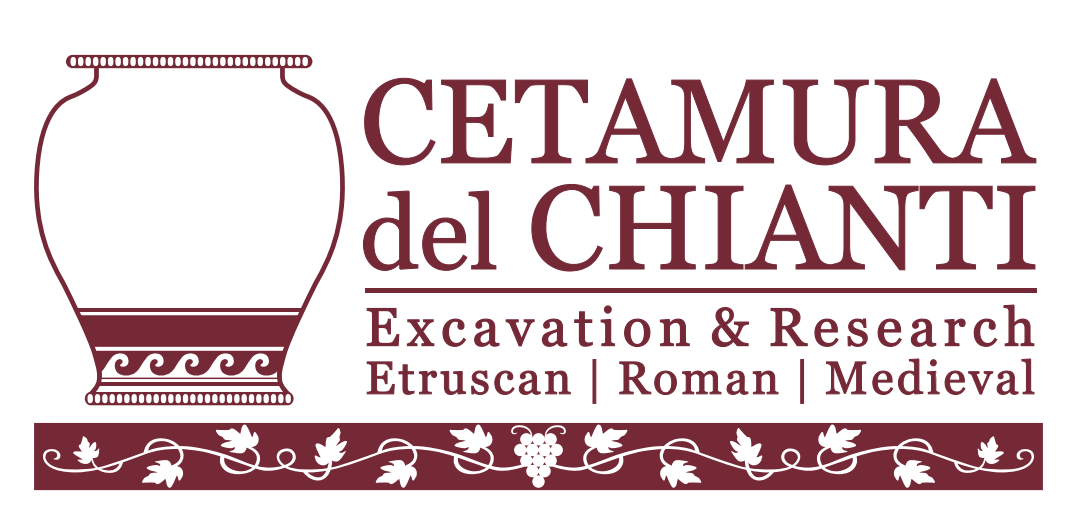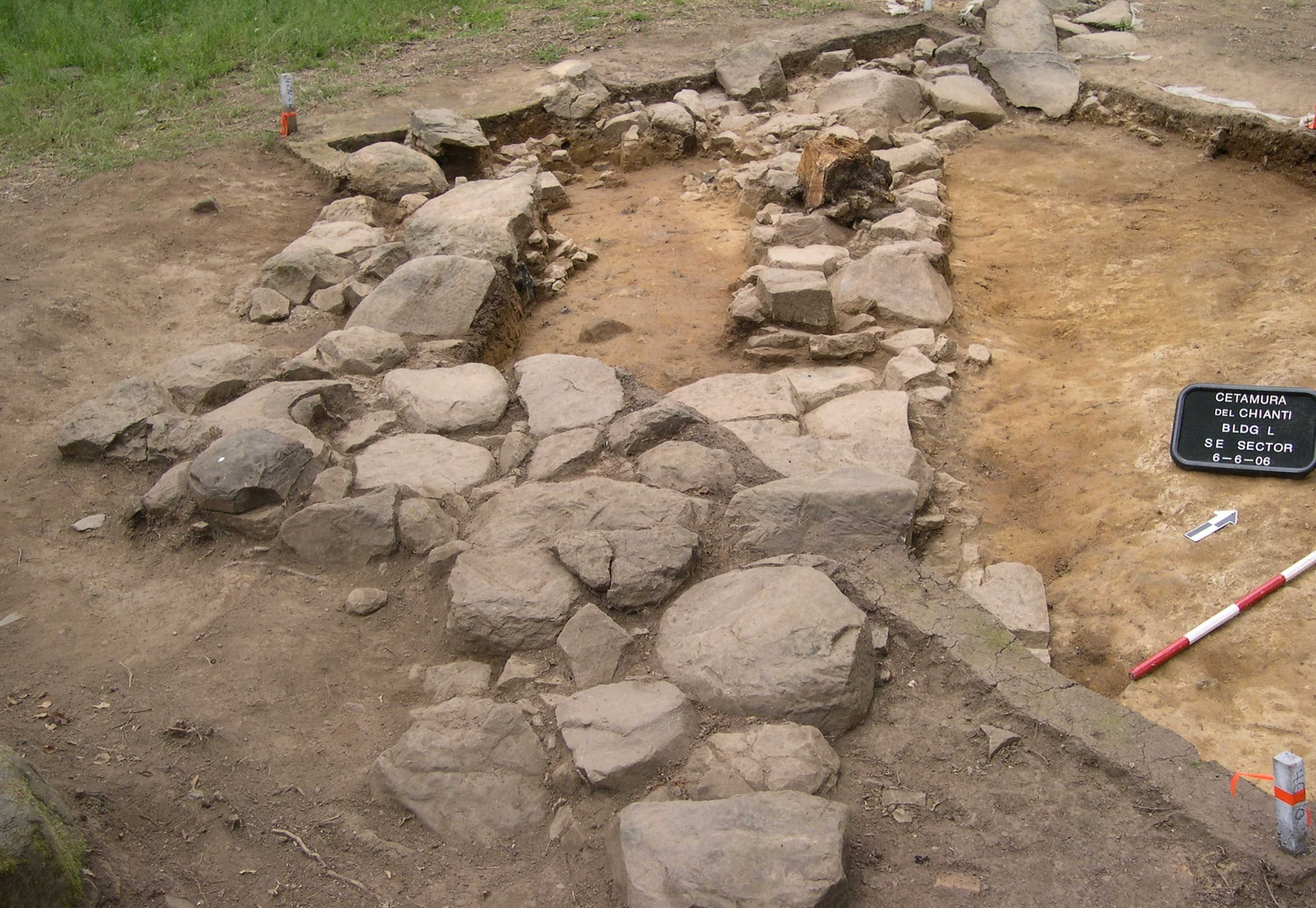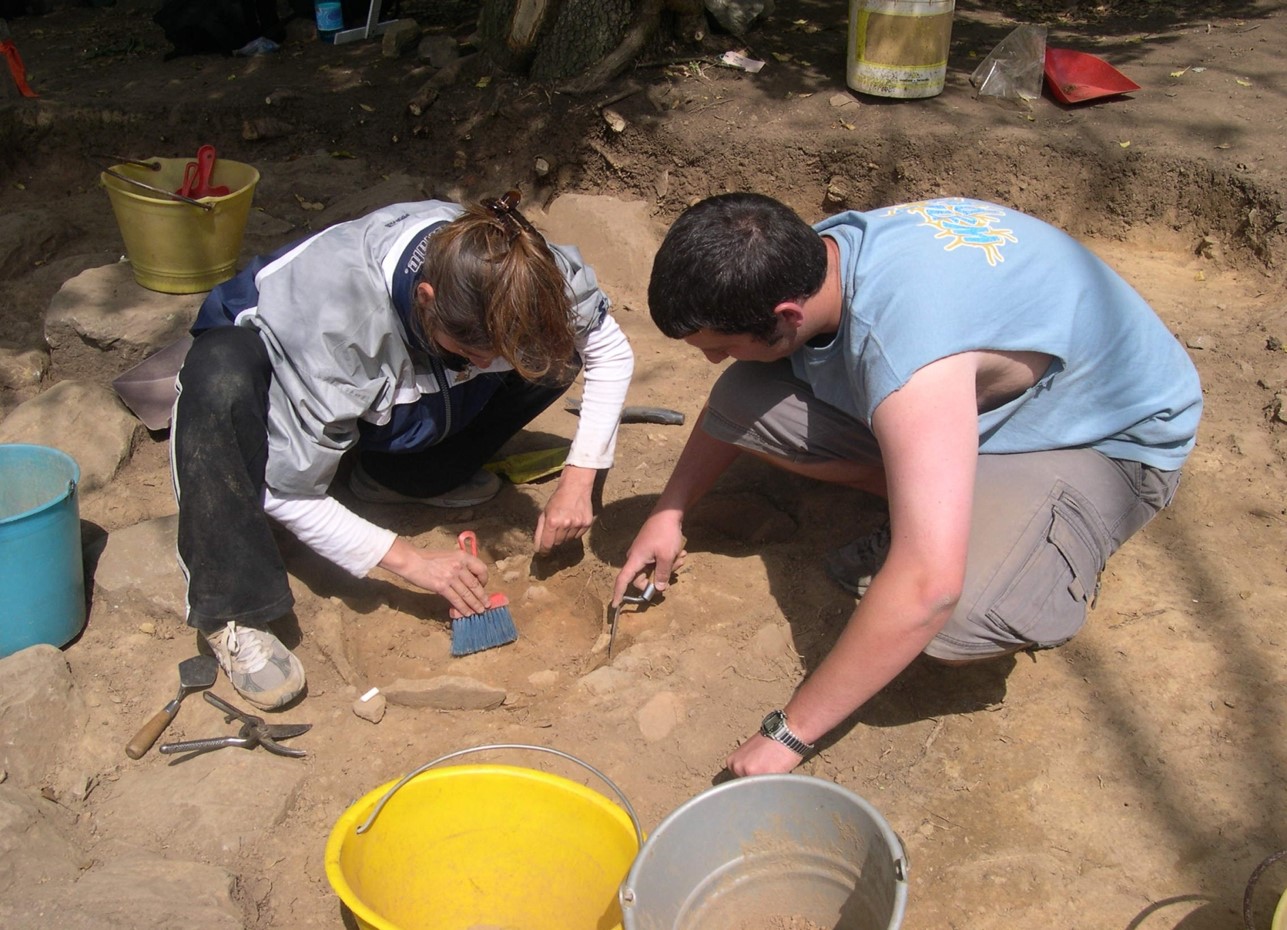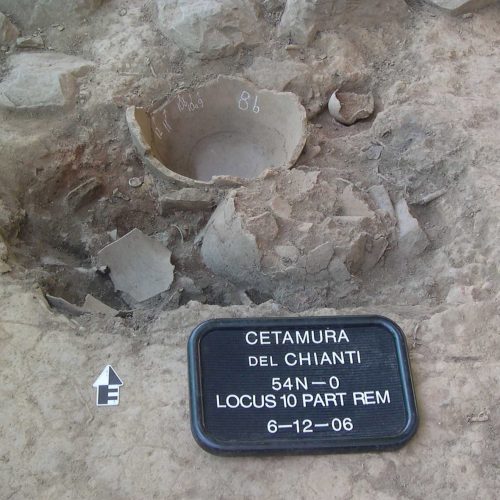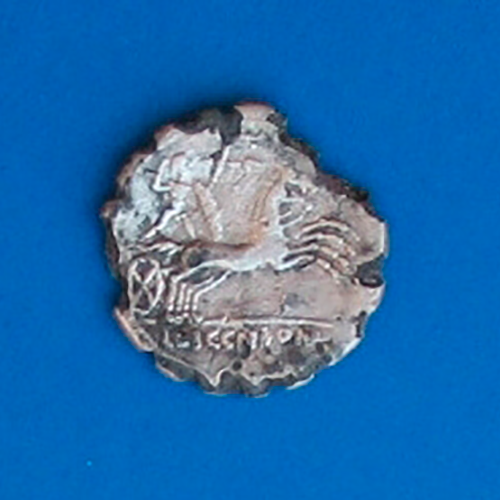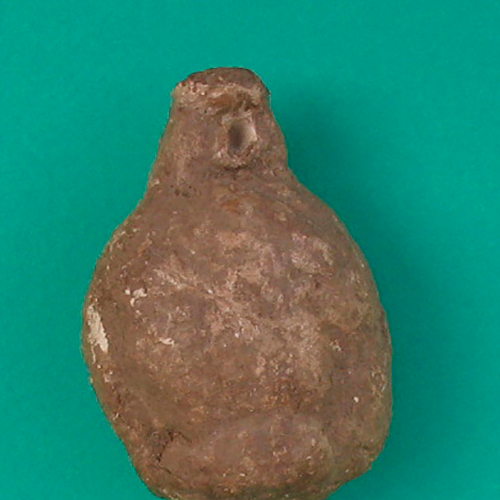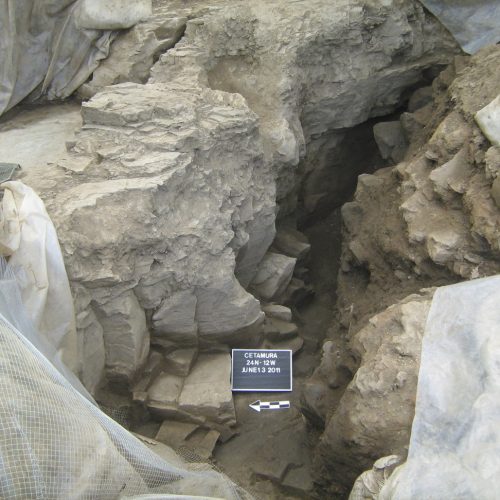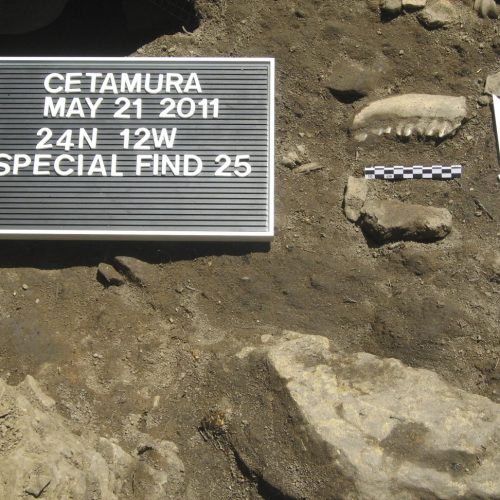2001-2011
The Sanctuary and a Ritual Pit
The hints of sacred activity on the site had begun with the discovery of votive inscriptions discovered in 1973 and 1983 and miniature vessels of a kind useful only to the gods. Spectacular confirmation of religious rituals and offerings came with the discovery of an entire sanctuary building, its altars and votive pits, in a flat area adjoining the artisans’ quarter.
The structure of Building L [a.] featured heavy, roughly cut foundation boulders, laid on the ground in a trapezoidal pattern. It had a forecourt on the southeast side with a beaten earth floor of a bright yellow clay.
The first pit discovered [b., c.], Votive Feature 1 (VF 1) contained miniature cups that had been offered along with numerous other items. Within this pit was a coin datable ca. 118 BCE [d.] that gave a clue that the sanctuary must have been consecrated near the end of the 2nd century BCE (Etruscan Late Phase 2), and therefore bids to be one of the latest of all known Etruscan religious structures. At this time there must have been an organized group of priests, artisans and citizens who spent hours making the first deposit in the sanctuary–breaking, burning and burying objects made of silver, bronze, lead [e.] and especially iron, as well as unpainted ceramic vessels. The rituals in the sanctuary were all bloodless, as no bones were found in any of the seven votive areas.
On the other hand, a great quantity of bone was found deposited in a crevice [f., g.] in the bedrock on the scarp in between Zone I and Zone II. The pit contained thousands of sherds of broken pottery (no vessel was whole) in a soil dense with ash—wares for cooking, drinking, dining and storage, datable to the second half of the fourth century BCE, i.e., much earlier than the activity in the sanctuary of the artisans. The deposit was dug in three separate campaigns, “Refuse Pits 1, 2 and 3,” and at the end it was clear that all were part of the same phenomenon. The presence of so much bone, including the remains of neonatal puppies and piglets, led to the hypothesis that the items in the pit were at some point ritually offered, probably all at the same moment. One possibility is that the Etruscans were clearing an altar area and ritually buried the sacred remnants.
